Changing for Climate Series *
Sarah Delano pauses near a caragana bush at the side of the road near Kinnaird Ravine in Edmonton. She flips through the pages of the recipe book she’s carrying, stopping at the page titled “Dandelion Green and Caragana Blossom Omelette.”
“This is one of our favourite things to harvest, my daughter and I,” says Delano. “This is her recipe, and I love it because we find [caragana] anywhere in the city.” The blossoms taste like pea shoots in the spring and you can add them to salads or omelettes!
For Sarah, foraging is an effective way to make use of local resources which aids food security, builds community, and develops an appreciation for the green spaces around us. Sarah is the Program Director at Parkdale Cromdale, and she also works with the Multicultural Family Resource Society.

Local food cookbook
“We were 10 or 11 women, all from different countries originally, and we came together to make this recipe book that helped us to feel a belonging in green space, to share some of our culinary knowledge and the things that we do with local foods,” says Sarah.
The book is called “Rat Routes and Reasons to Gather.” It’s described as a culturally diverse, culinary journey in Edmonton’s wild and natural spaces. “Rat” is from Rat Creek Ravine (a.k.a. Kinnaird Ravine), which was dubbed in the early 1900s by the trappers who frequented the area for the muskrats that lived there.

Food foraging and growing local
For Parkdale Cromdale Community League, foraging is just the beginning of their passion for local food. The league also runs a thriving community garden that provides boxed plots of tillable soil to individuals and agencies in the neighbourhood. Community league volunteers also tend to some of the raised boxes.
“I think there’s an increased interest in community gardens,” says Sarah. “A lot of people are becoming concerned about food security and food sovereignty, and growing the kinds of foods that you want to be eating.”
For many, the best part of foraging and growing local food is the Harvest Festival dinner hosted each fall, to which the entire community is invited.
“We’re doing jam-making this year,” says Sarah. “It’s just about bringing the community together and celebrating the space that we have to garden, and also celebrating all of that produce that we’re able to grow or harvest in the community.”
“There is obviously a global climate crisis,” says Sarah, who, along with other community volunteers, believes in doing what they can to help on a day-to-day basis locally. “It helps in terms of reducing climate impacts so we’re not importing as much food and we’re not travelling to get our food.”
Parkdale Cromdale Gallery

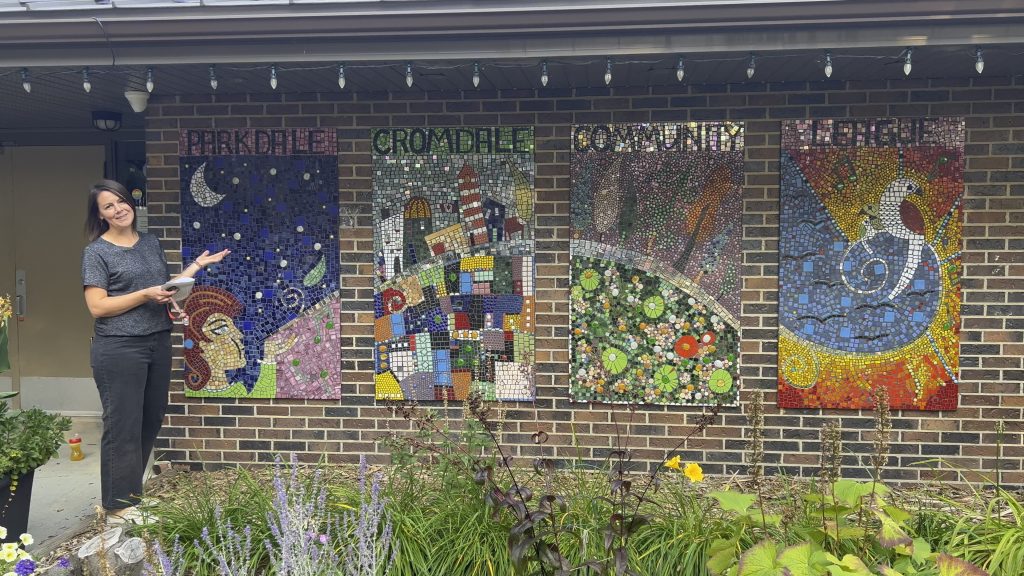
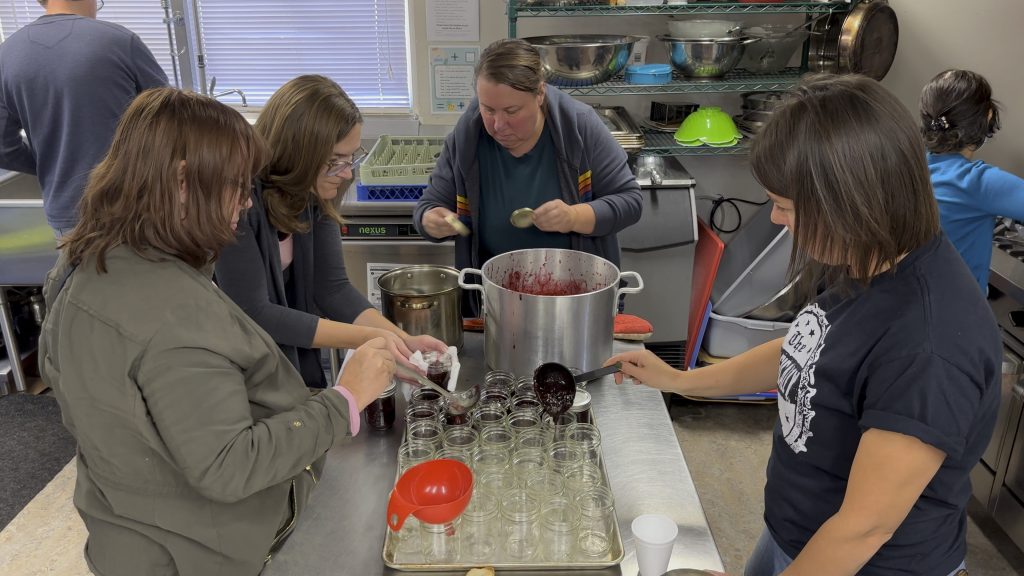
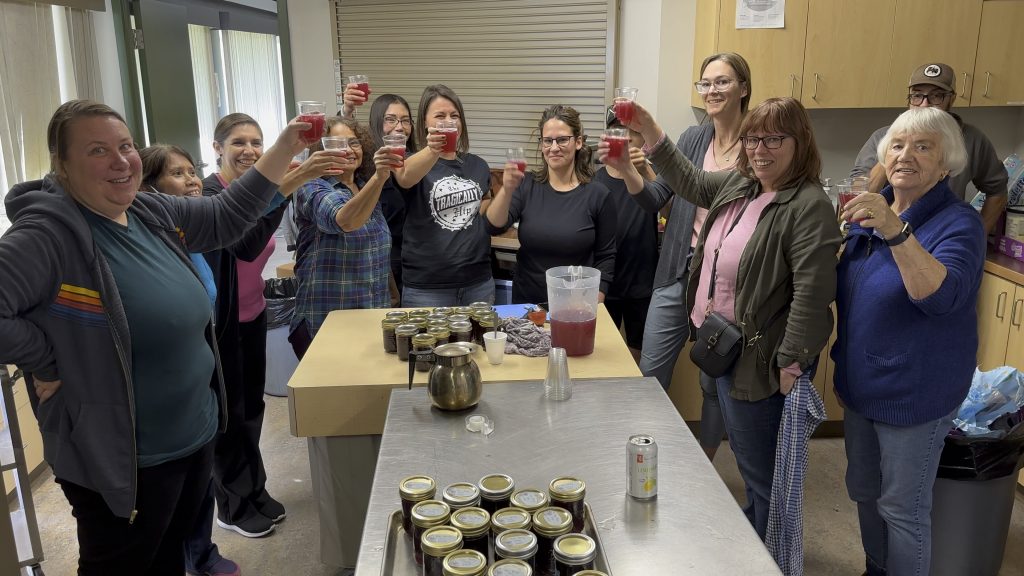

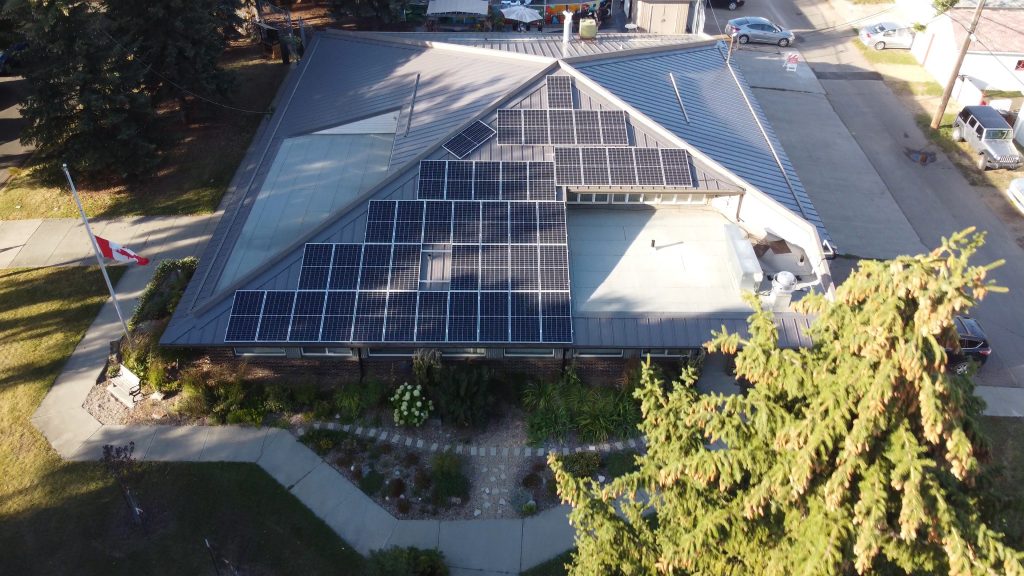

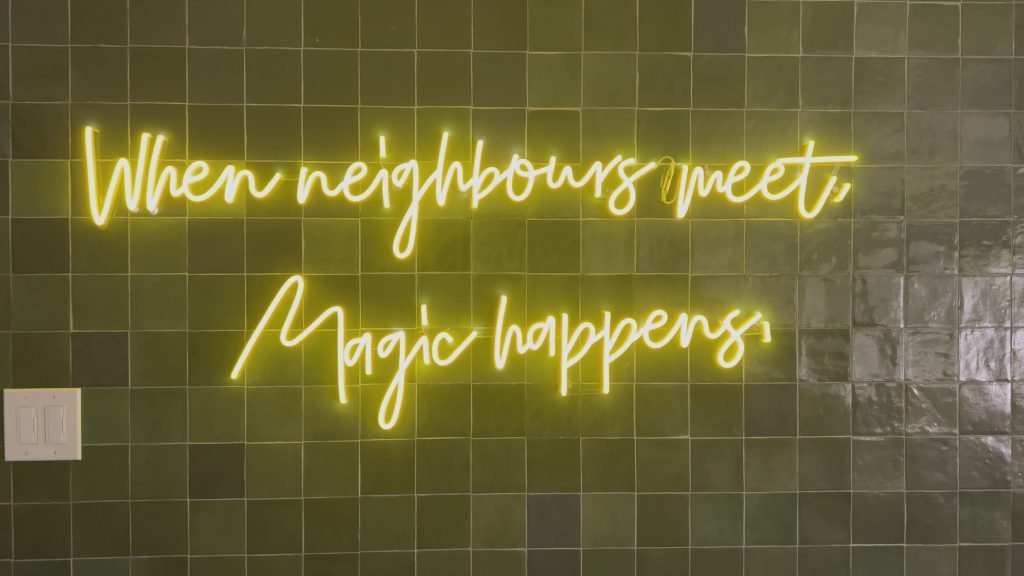
Community art walk
Parkdale Cromdale Community League isn’t just filling bellies with delicious local food, they’re building community through a nifty art project in partnership with CreArt Edmonton. The Kinnard mural project includes 64 murals running along the Ravine trail on wide-ranging themes including nature, gardening, community development and more.
“It makes the space more accessible and more welcoming,” says Sebastian Barrera of CreArt Edmonton and Communications Director at Parkdale Cromdale. “It’s bringing people together to develop sustainable, creative, and imaginative communities.”
The art is attached to a retaining wall alongside the trail and it goes on for more than half a kilometer offering many perspectives from diverse members of the community. They have worked with the Mennonite Center and the Bissell Center and IHuman to bring this vision to life.
Community power

Parkdale Cromdale Community League has also taken other climate-friendly actions such as completing an energy audit of their community hall along with some energy efficiency upgrades to lighting, the ventilation system, roof insulation and more.
Sarah says Parkdale Cromdale has installed 16.5 kilowatts of solar, enough to provide all of the leagues’ electricity on a net annual basis. This means the money they used to spend on electricity can now be reinvested in community programs.
Community Leagues are often reflections of local needs. Parkdale Cromdale offers a diverse and integrated vision of sustainability that seamlessly weaves cultural, social and environmental themes into their sense of community.





